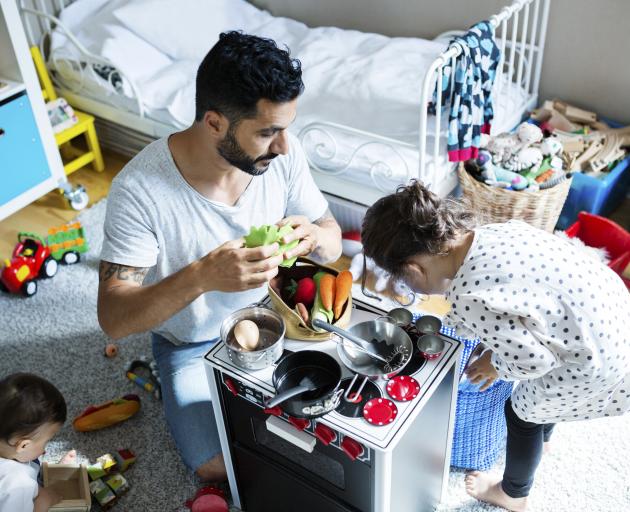

It was interesting watching the grandchildren play together over the Christmas holidays. The boys tended to be more physical and physically active and have a "let's get on with it" individualistic approach managed by rules of play, while the girls tended to be more inclusive, more caring of each other and more co-operative with fewer rules.
You'll notice that I've been careful to use the word "tend". This is because these are only behaviour attributes and aren't biologically ring-fenced according to gender. Not all females put the "relationship" before the "game" and not all males would regard the "game" as "must-win" important.
It was reassuring to see that what the grandkids chose to play with was less gender-based in the traditional sense. They all ran around with swords and Nerf guns, yet the 2-year-old grandson's favourite activity for individual play was pushing around a doll in its buggy. One granddaughter chose a Disney princess bed-throw, the other a Spiderman one. They all loved their walkie-talkie, orienteering watches. And they all went to bed with their teddies.
I'd already noted that the granddaughter, who loves her pink dolls' house, has chosen to wear the nominated boys' school uniform. At 6, she has determined that it's far more practical for playground play. And the 10-year-old has had no problem with the sneakers he chose that have a pink trim and laces.
Our youngsters' play does reflect the fact that, today, it is acceptable for all children to play with doll-like toys and trucks and bulldozers in the sandpit. As they grow, children's play does tend to mirror father's and mother's activities. However, trying to have our children match a pre-conceived image for them will end in tears; tears for the parents who feel let down when it doesn't work out and tears for the adult son or daughter who hasn't been allowed to be true to him or herself.
In the main, today's parents do seem to have taken this on board and aren't forcing sons to be Bob the Builder and daughters to be Florence Nightingale.
Unfortunately, many promoted approaches to gender neutrality appear biased in one direction - against young boys. At its extreme, gender neutrality appears to be more about emasculating maleness than about neutrality.
So, the trick is to treat your children as individuals with their own attributes and relate to them that way. You can support their interests and they can then develop naturally and as it fits them, based on your role modelling and that of significant others in their lives.












